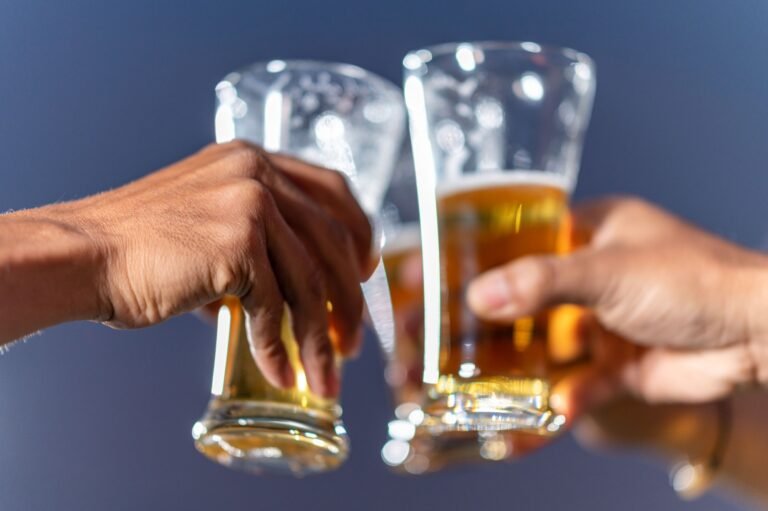Study: Total and specialty alcoholic beverage consumption and long-term risk of gout among men and women. Image credit: Nirat.pix / Shutterstock.com
A recent one JAMA Network Open The study evaluates the relationship between total and specific alcohol consumption and gout in men and women.
Gout and alcohol consumption
Gout is the most common form of inflammatory arthritis and occurs due to higher serum urate concentrations. The prevalence of gout varies between geographic areas and between men and women.
In addition to genetic factors, lifestyle factors also influence the development of hyperuricemia and gout. Alcohol consumption, for example, has been associated with elevated serum uric acid levels.
Previous research on this relationship is limited, as only men were included in the study cohort or used a cross-sectional or case-control design. Furthermore, existing studies have mainly used non-drinkers as a control group, which leads to problems of reverse causality. Pre-existing health problems could also predispose a person to abstain from alcohol, which could move them into the ‘infrequent drinker’ or ‘non-drinker’ categories, thus biasing the association between gout risk and alcohol intake.
About the study
The current study used sex-specific analyzes to investigate associations between long-term gout risk and total and specific alcohol intake.
The study included 401,128 UK Biobank participants who were free of gout at baseline and aged between 37 and 73 years. Monitoring took place until 31 December 2021, while data analysis took place between August 2023 and June 2024.
Data on consumption of total alcohol and specific alcoholic beverages were obtained by questionnaire. The primary study outcome variable was incident gout, which was determined using hospital health records.
Multivariable Cox proportional hazards regression models were calculated to obtain sex-specific hazard ratios (HRs) and 95% confidence intervals (CIs) of incident alcohol-related gout.
Study findings
The final study cohort included 179,828 men and 221,300 women, most of whom were Asian or Asian British, Black or Black British and White racial or ethnic. Among men and women, 93.6% and 90.5% were drinkers, respectively, 3.6% were former drinkers, 2.9% and 5.9% were never drinkers, respectively.
In the exploratory analysis, 6,561 and 2,078 gout events were observed in men and women, respectively, over a median follow-up of 12.7 years. In the main analysis, 4,096 and 1,182 of the identified cases were women, respectively.
Among men, current drinkers were associated with an increased risk of gout in the exploratory analysis compared with never drinkers. Among women, this association was nonsignificant and reversed in the main analysis.
Among current male drinkers, the risk of gout was higher as frequency of drinking increased. A positive association was observed only among women after body mass index (BMI) values were included in the multivariate model.
Men consumed significantly more beer and cider than women. Beer or cider, white wine or champagne, and spirits were associated with a higher risk of gout in both men and women, with the strongest association with beer or cider for both sexes.
Among women, the association between gout and alcohol consumption for each measure each day was stronger than among men. Only among men was a positive association observed for drinking a glass of red wine each day. however the association with fortified wine was insignificant.
In the exploratory analysis, light or moderate consumption of specific alcoholic beverages was significantly associated with a lower risk of gout. In the main analysis, these associations did not exist when adjusted for the possibility of reverse causality.
conclusions
Looking closely at reverse causation, the current study found a positive association between increased risk of gout and consumption of several specific alcoholic beverages among men and women. These gender differences could be attributed to differences in the types of alcohol consumed rather than biological differences.
Despite the careful approach adopted in the current study, residual confounding could not be completely eliminated. In addition, the self-reported nature of the study could have led to misclassification of exposure regarding frequency of alcohol consumption.
Other limitations include the assessment of alcohol intake only at baseline and the relatively low consumption of fortified wine in the study sample, which reduced the power of estimation. In addition, most participants were of European descent, which could limit the generalizability of the findings.
Journal Reference:
- Lyu, J., Miao, M., Wang, J., et al. (2024) Total and specialty alcoholic beverage consumption and long-term risk of gout among men and women. JAMA Network Open 7(8). doi:10.1001/jamanetworkopen.2024.30700
